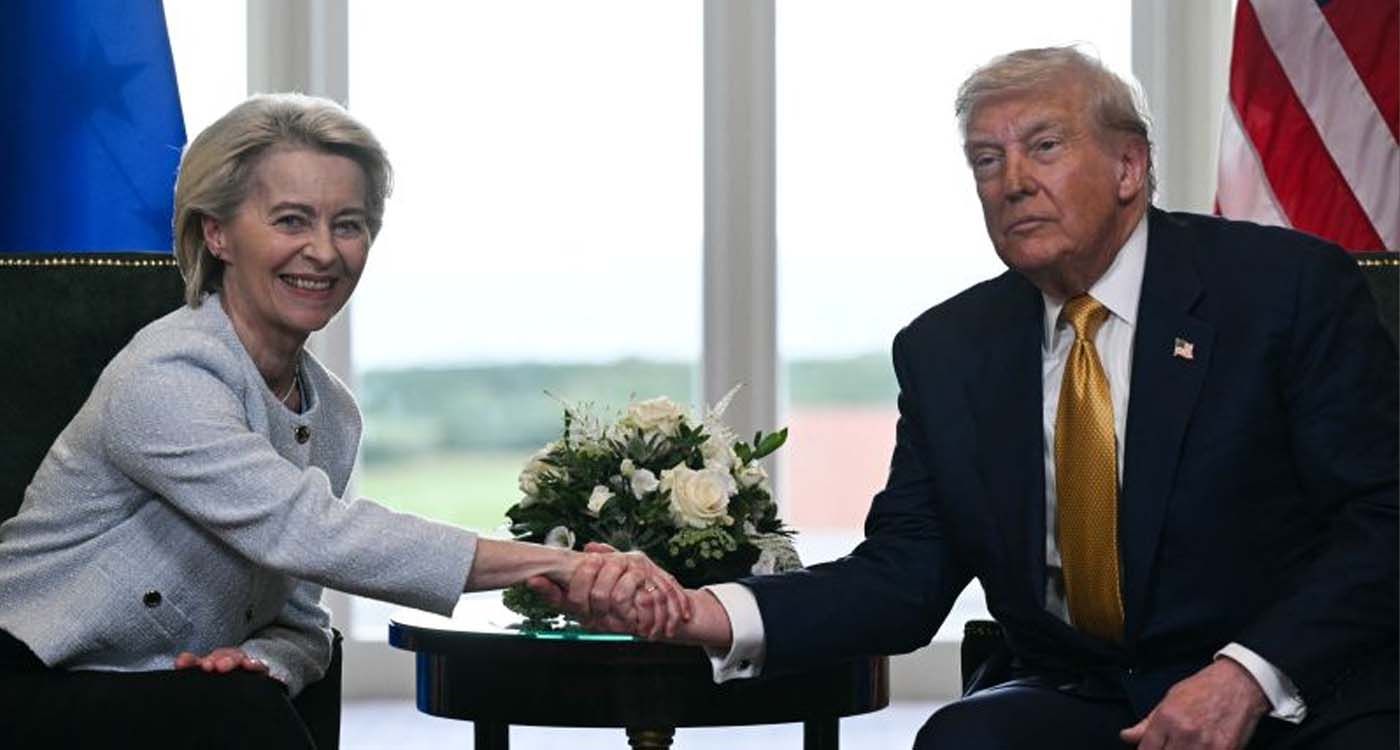- Home
- Middle East
- Trump Redefines Global Trade Relations with the European Union

©Brendan Smialowski / AFP
By finalizing a major trade agreement with the European Union, US President Donald Trump marks a decisive turning point for the American economy.
The strategic deal, announced last Sunday, significantly reshapes transatlantic economic relations while reinforcing the United States’ industrial, energy and geopolitical sovereignty.
Touted by the White House as a “colossal deal,” the agreement is built on an unprecedented tariff structure: a baseline rate of 15% for most European goods exported to the United States, including automobiles, semiconductors and pharmaceuticals.
In return, the EU will eliminate tariffs on American industrial goods and open its market further to US exporters.
The agreement also includes two landmark financial commitments: $750 billion in European purchases of American energy by 2028, and $600 billion in direct European investment in the United States.
For Washington, the agreement aims to “fundamentally rebalance the economic relationship between the world’s two largest economies.”
As the Atlantic Council notes, the deal has helped avert “a self-destructive trade war within the world’s most deeply integrated trade and investment relationship.”
A Long-Term Strategic Vision
According to the Center for Strategic and International Studies (CSIS), this tariff approach rests on four pillars: uniform tariffs by partner, maintaining high tariffs on strategic sectors such as steel and aluminum, purchase commitments instead of automatic reciprocal tariffs and, above all, the absence of retaliatory measures.
CSIS highlights that if properly calibrated, this strategy could boost US GDP by 2.2% through improved terms of trade, which refers to the ratio between export and import prices, often expressed as a percentage.
If the ratio rises, the United States can obtain more imports for the same amount of exports. If it falls, the country must export more to cover its imports.
This agreement follows the approach of previous deals made with Japan and Vietnam, emphasizing energy purchases and increased foreign direct investment.
US Energy: The Core of the Agreement
With a European commitment of $750 billion in energy purchases, including oil, natural gas and nuclear power, the United States is strengthening its position as an energy superpower.
American producers see this as a historic opportunity. Just hours after the agreement was announced, Venture Global, a US liquefied natural gas (LNG) exporter with several contracts in Europe, announced it would move forward with a $15 billion project to produce 28 million tons of LNG annually, nearly half of Germany’s current gas demand.
The American Petroleum Institute, a powerful energy lobby, hailed the deal as one that “strengthens America’s standing as a vital energy supplier.”
But the Atlantic Council highlights another strategic aspect of this energy boost: it will enable the EU to power critical infrastructure such as data centers and artificial intelligence technologies, thanks to a reliable base supply of energy.
A Clear and Purposeful Protection Strategy
According to CSIS, customs revenues generated by this agreement could amount to as much as 1.1% of US GDP, representing approximately 5% of the federal budget. If these funds are allocated to reducing income taxes, the resulting productivity and employment gains could be significant.
Maintaining high tariffs – set at 50% on steel, aluminum and copper – is intended to safeguard strategic sectors, support reindustrialization efforts and enhance the resilience of supply chains.
Furthermore, the agreement enforces stringent rules of origin to guarantee that its benefits accrue solely to American and European companies.
A Much-Needed Stability
For Donald Trump, this agreement fits within a consistent doctrine of trade rebalancing that began with the United Kingdom, Japan, Vietnam and Indonesia.
The signing of the deal reassured financial markets, which feared a major trade war. In fact, the S&P 500 and Nasdaq closed higher on Monday.
Finally, the Atlantic Council points out that this agreement extends beyond trade alone. It also acts as a geopolitical tool designed to maintain Donald Trump’s strategic engagement with Europe.
By asserting strength without triggering retaliation, Donald Trump did not merely negotiate a trade deal, but established a new global balance of power. From now on, access to the American market carries a cost and is negotiated on America’s terms.
Far from economic isolation, this agreement reflects the return of a confident, respected America that plays a central role in shaping global standards.
Read more



Comments